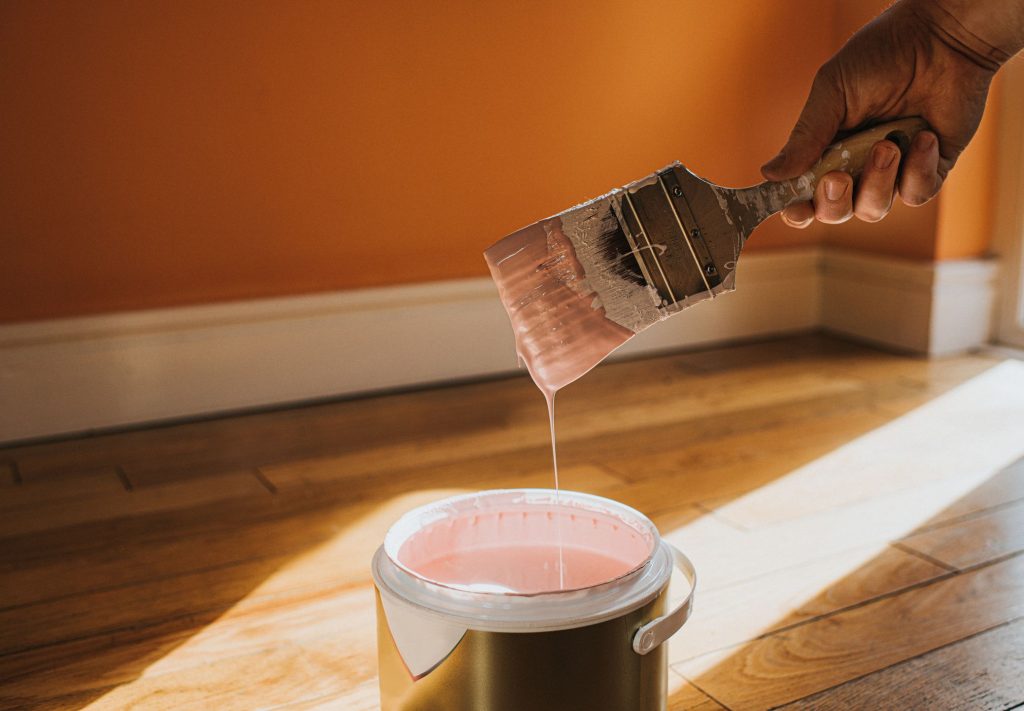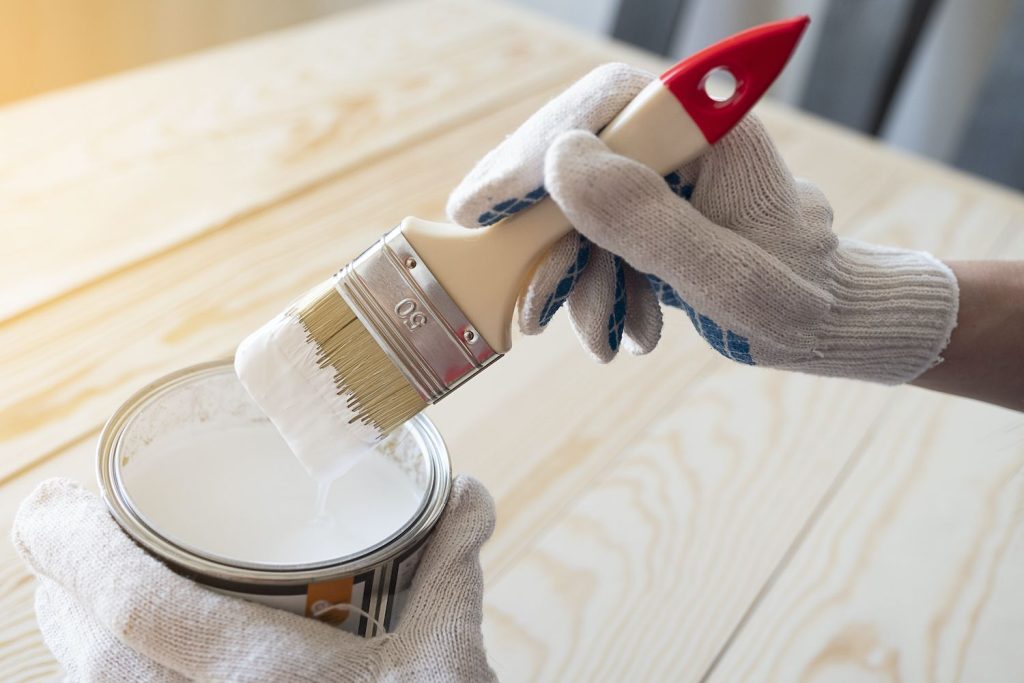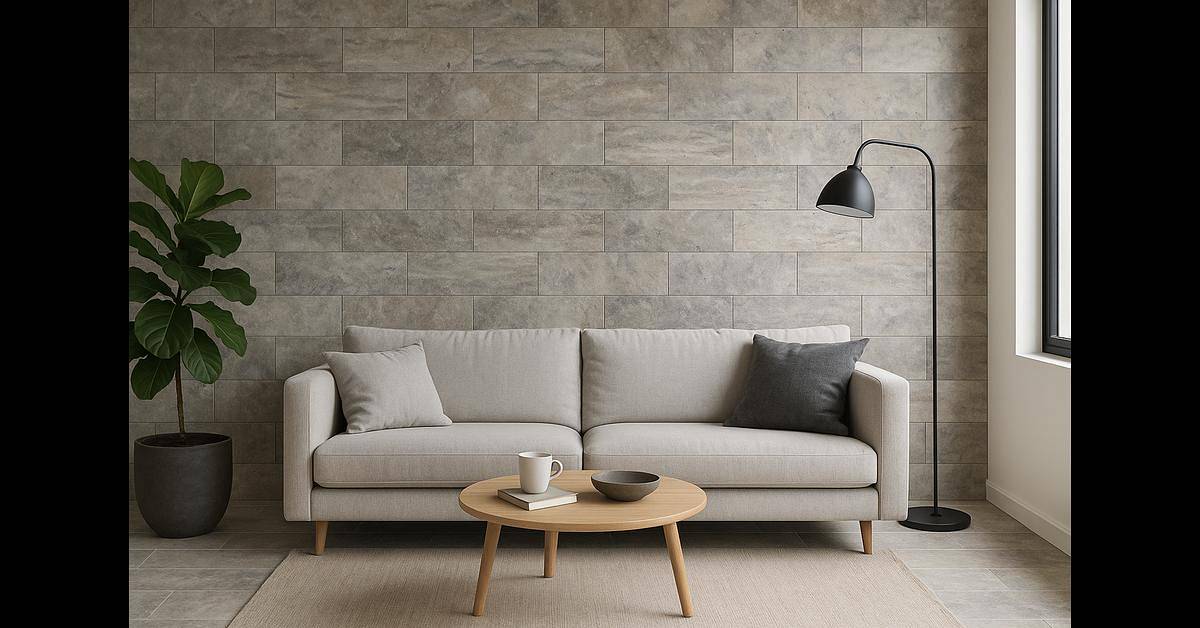Yes, you can use wood paint on walls, but keep in mind that it might not provide the best durability or finish compared to paints specifically designed for walls.
There are also some essential things that you should keep in mind like surface preparation, priming, choosing the right paint, and maintenance. You use wall paints when you want to decorate a wall. There are numerous varieties, colors, and finishes available. On both interior and outdoor walls, wood paint is an option
Read on to find out more about painting your walls using wood paint. Let’s get rolling.
Can wood paint be used on walls?
Wood paint, designed primarily for application on wooden surfaces like doors and floors, is formulated with ingredients such as phenolic dry block, unsaturated polyester, polyurethane, and wax gram.
Moreover, Its utility extends to enhancing the appearance of wood by imbuing it with a vibrant fullness. Beyond aesthetics, wood paint contributes to the reinforcement and durability of wooden structures. Its properties include resistance to water and the impacts of regular use. Nevertheless, it’s worth noting that over time, wood paint has been observed to undergo a yellowish hue and a tendency to become more fragile.
Some precautions before using wood paint.

1. Surface Preparation:
- First, Clean the wall surface thoroughly to remove dirt, dust, and any existing paint or coatings.
- Repair any imperfections, such as holes or cracks, using spackling compound or filler. Sand the repaired areas until they are smooth and level with the rest of the wall.
- Then, sand the entire wall lightly to create a slightly rough surface that will promote better paint adhesion. Use fine-grit sandpaper (e.g., 120-220 grit) for this purpose.
2. Priming:
- Apply a suitable primer to the wall surface. Look for a high-quality primer that is designed to adhere well to both wood and walls.
- It helps to seal provides a consistent base for the paint, and enhances adhesion.
3. Choosing the Right Paint:
- Select a wood paint that is suitable for interior walls. Water-based latex or acrylic paints are generally a good choice, as they are easy to work with and offer good durability.
- Choose the desired color and finish (e.g., matte, satin, semi-gloss) for your walls. Keep in mind that wood paint might have a slightly different finish compared to regular wall paint.
4. Application:
- Stir the paint thoroughly before applying. Follow the manufacturer’s instructions for proper mixing.
- Use appropriate painting tools, such as brushes, rollers, or sprayers, for applying the paint. Brushes are useful for cutting in around edges and corners, while rollers cover larger areas more quickly.
- Apply the paint evenly in smooth, overlapping strokes. Avoid heavy application to prevent drips and uneven coverage.
- Allow the first coat to dry completely according to the paint manufacturer’s instructions. This typically takes a few hours.
5. Second Coat and Finishing:
- For improved coverage and a more consistent finish, add a second layer of paint. Add the second layer using the same procedure.
- Before evaluating the final finish, let the second coat completely dry. Spray additional coats if required to get the color and coverage you want.
6. Clean-Up:
- Clean your painting tools and equipment promptly after use. Use the appropriate solvent or cleaner recommended by the paint manufacturer for the type of paint you used.
7. Maintenance:
- Keep in mind that wood paint might have different characteristics than regular wall paint. It may be more prone to wear and tear, especially in high-traffic areas. Be prepared for potential touch-ups over time.
8. Test and Planning:
- Before starting the entire project, it’s a good idea to do a test patch on a small, inconspicuous area of the wall. This will help you ensure you’re satisfied with the color, finish, and overall results before committing to painting the entire wall.
What kind Of Wood paints are available?
Wood paints come in two primary categories: water-based and oil-based formulations. The preference often leans toward oil-based wood paint due to its richness and robustness.
However, it’s crucial to note that this type carries potential drawbacks, including risks of combustion and environmental pollution. As a result, users must exercise caution and prudence when applying this variant.
On the other hand, water-based wood paint emerges as a more environmentally conscious choice. This type boasts pollution-free attributes and is composed of non-toxic components.
Also. Its distinct advantages encompass minimal to no scent, non-combustibility, non-volatility, and non-explosiveness, culminating in a notably safer application experience.
Lastly, Beyond these overarching distinctions, wood paints also exhibit further subdivisions concerning both their sheen and functional attributes. Similar to other paint categories, a spectrum of options exists, ranging from matte finishes to glossy ones. Moreover, specialized wood paints tailored for floors and furniture purposes are readily available, underscoring the versatility and adaptability of this paint type.
Wood Paint Uses
While wood paint may not be explicitly designed for walls, its versatility allows for its utilization in such applications. In fact, its potential extends across various mediums, including cabinets, furniture, floors, and yes, even walls. Moreover, its adaptability spans diverse surfaces, encompassing plastic, brick, stone, and metal.
“Can you use interior wood paint on walls?” Sure! Paint isn’t just for indoors; you can also use it outdoors. Experts suggest picking different types of paint for different areas. For indoor walls, go for flat, satin, or eggshell finishes. For trims and doors, use semi-gloss or high gloss paint.
However, it’s important to understand that the benefits advertised by manufacturers are usually based on where and how the product is meant to be used. This means there may be differences in how well it works or the results you get. For example, a water-based wood paint might give a softer shine compared to regular glossy wall paint.
To choose wisely, it’s crucial to carefully read the product label. Manufacturers often provide advice on the best ways to use their product.
Moreover, they also give detailed instructions on what you need to do before painting to get the best results. This includes thorough cleaning and applying primer. Following these guidelines ensures that your painting project turns out the way you want it to.
Is Wall Paint with High Gloss Good For Walls?

Yes, while high gloss paint can offer a visually striking and durable finish for walls, its suitability depends on various factors. Despite its reflective properties, it may accentuate imperfections, necessitating careful surface preparation. Additionally, its resilience to stains and moisture makes it advantageous for high-traffic areas, but the need for regular cleaning should be considered. The choice between high gloss and other paint sheens should align with your design preferences, room size, and desired ambiance. Consulting with professionals or testing a small area can aid in making an informed decision.
Utilization of High Gloss Finishes
High gloss finishes find their most advantageous application in areas of the household exposed to elevated moisture levels and frequent contact, particularly by soiled hands. Their inherent durability and ease of maintenance make them exceptionally well-suited for such environments.
An exemplar resides within the culinary domain, where the kitchen’s demands align seamlessly with high gloss paint’s attributes. Moreover, their utilization of doors and window trims assures streamlined surface upkeep.
Nevertheless, there exist wall surfaces within the household where the deployment of high gloss paints lacks pragmatic feasibility. Achieving the desired gloss necessitates multiple coats, thereby escalating paint consumption. As a result, low-traffic regions warrant prudence against the adoption of this paint variety.
Consider, for instance, the bedroom—its subdued environment may render the pronounced sheen of high gloss paints excessive. Here, a judicious selection would favor paint boasting a flat finish, not only assuring an aesthetically fitting outcome but also conserving financial resources.
Thus, the optimal approach involves striking a harmonious equilibrium between functional utility and stylistic inclination when deliberating the integration of high gloss paint onto your wall surfaces.
FAQ
What happens if you accidentally used wood paint on walls?
If you use paint for wood on walls by mistake, it might not stick properly and could start peeling off. Also, it might look uneven or not the color you want. Cleaning the walls could become harder, and the paint might not last as long as it should.
Is wood paint suitable for all types of walls?
No, wood paint might not adhere well to certain wall materials like drywall or plaster, which require wall-specific paint.
Will wood paint offer the same finish on walls as on wood surfaces?
Not necessarily. Wood paint may look different on walls due to variations in texture and absorption rates.
Should I use a primer before applying wood paint on walls?
Yes, using a primer designed for walls is recommended before applying wood paint to ensure better adhesion and a smoother finish.
Can wood paint on walls withstand cleaning and scrubbing?
No, wood paint may not hold up as well to cleaning and scrubbing as wall-specific paints.
Will wood paint emit a strong odor on walls?
Yes, wood paint can emit a strong odor, similar to regular wall paints. Proper ventilation is important.
Can I use wood stain instead of wood paint on walls?
Yes, you can use wood stain on walls, but it’s primarily used for enhancing the natural appearance of wood surfaces.
Are there special considerations when using wood paint on exterior walls?
Yes, exterior walls require paint that can withstand weather conditions. Wood paint might not be the best choice.
Can I apply wood varnish over wood paint on walls?
Yes, you can apply wood varnish over wood paint, but it might alter the paint’s appearance and finish.
Can you use wall paint on wood?
Yes, you can use wall paint on wood. However, it’s important to ensure that the paint you choose is suitable for wood surfaces and that you properly prepare the wood before painting to achieve the best results.
Conclusion
Overall, while wood paint is primarily formulated for wooden surfaces such as doors and floors, its versatility allows for potential use on walls as well. The decision to employ wood paint on walls hinges on a careful evaluation of several factors.
Considerations include the specific type of wood paint, the desired finish and appearance, the level of durability required, and the compatibility with the wall surface. Adequate surface preparation, suitable priming, and meticulous application techniques are essential to ensure a successful outcome.
While wood paint offers unique advantages, such as enhanced durability and a distinct aesthetic, it’s important to be mindful of potential differences in gloss levels and overall performance compared to traditional wall paint. Ultimately, a judicious approach, guided by manufacturer recommendations and expert advice, will help determine whether using wood paint on walls is a suitable choice for your particular project.











